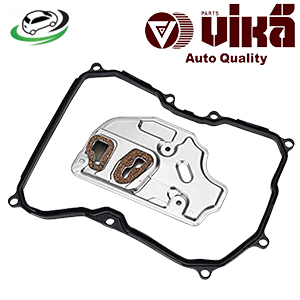Get Audi A3 (8P1) Rear Engine Motor Mount Bracket 1K0199855L in Kenya
An engine motor mount is a critical component in any vehicle, playing a vital role in maintaining the stability and alignment of the engine within the chassis. This piece not only supports the weight of the engine but also absorbs and dampens vibrations, contributing to a smoother ride and reducing wear and tear on other parts of the vehicle. Understanding the functionality, types, materials, and maintenance of motor mounts is essential for anyone involved in automotive maintenance or engineering.
Functionality of Motor Mounts
The primary function of an engine motor mount is to secure the engine to the vehicle’s frame or subframe. It serves several key purposes:
- Support: The motor mount holds the engine in place, preventing it from shifting during acceleration, braking, or turning.
- Vibration Dampening: Engines generate significant vibrations due to the combustion process and moving parts. Motor mounts help to absorb these vibrations, preventing them from being transmitted to the rest of the vehicle.
- Alignment: Proper alignment of the engine ensures that the drivetrain components are correctly positioned, which is crucial for efficient power transfer and vehicle handling.
- Noise Reduction: By dampening vibrations, motor mounts also play a role in reducing noise, contributing to a quieter cabin environment.
Types of Motor Mounts
Motor mounts come in various designs, each suited to different applications and performance requirements. The main types include:
- Rubber Motor Mounts: The most common type, rubber motor mounts, use a rubber insulator between metal components. They provide excellent vibration dampening and are relatively inexpensive. However, rubber can degrade over time, especially when exposed to oil and extreme temperatures.
- Hydraulic Motor Mounts: These mounts contain a fluid-filled chamber that helps to absorb vibrations more effectively than rubber mounts. They are often used in luxury and high-performance vehicles due to their superior comfort and noise reduction capabilities.
- Polyurethane Motor Mounts: Known for their durability and stiffness, polyurethane mounts are often used in high-performance and racing applications. They offer less vibration dampening than rubber or hydraulic mounts but provide better engine stability.
- Solid Motor Mounts: Typically made from metal, solid mounts offer the highest level of engine stability. However, they do not dampen vibrations, making them unsuitable for regular street use. They are primarily used in racing and high-performance vehicles where engine movement must be minimized.
Materials Used in Motor Mounts
The materials used in motor mounts are chosen based on the required balance between durability, vibration dampening, and cost:
- Rubber: The most common material due to its excellent vibration dampening properties and low cost. However, it is prone to wear and degradation over time.
- Polyurethane: Offers superior durability compared to rubber and maintains its properties over a broader temperature range. It is stiffer, providing better engine support but less vibration dampening.
- Metal: Used in solid mounts, metals like steel or aluminum provide maximum strength and stability. However, they do not absorb vibrations, leading to increased noise and harshness.
- Hydraulic Fluids: Used in hydraulic mounts, these fluids are typically silicone-based, providing excellent vibration absorption and durability.
Signs of Failing Motor Mounts
Motor mounts are subject to wear and can fail over time. Recognizing the signs of failing motor mounts is crucial for timely maintenance:
- Excessive Vibrations: Increased vibrations felt in the cabin, especially during idling, can indicate worn or damaged motor mounts.
- Engine Movement: Noticeable shifting or tilting of the engine during acceleration, braking, or turning can be a sign of a failing motor mount.
- Unusual Noises: Clunking or banging noises when shifting gears or going over bumps may indicate loose or broken motor mounts.
- Visual Inspection: Cracks, tears, or leaks in the mounts can be identified through a visual inspection, signaling the need for replacement.
Maintenance and Replacement
Maintaining motor mounts involves regular inspections and timely replacements. Here are some steps for effective motor mount maintenance:
- Regular Inspection: Periodically check motor mounts for signs of wear or damage. Look for cracks, tears, or leaks in rubber or hydraulic mounts.
- Monitor Vibrations and Noises: Pay attention to any changes in vibrations or unusual noises, as these can be early indicators of motor mount issues.
- Professional Assessment: If any symptoms of failing motor mounts are observed, have a professional mechanic inspect the mounts and recommend replacement if necessary.
- Replacement: Replacing motor mounts involves lifting the engine slightly to remove the old mounts and install new ones. This process requires proper tools and expertise to ensure the engine is correctly aligned and supported.
Follow us on Facebook for more parts.




